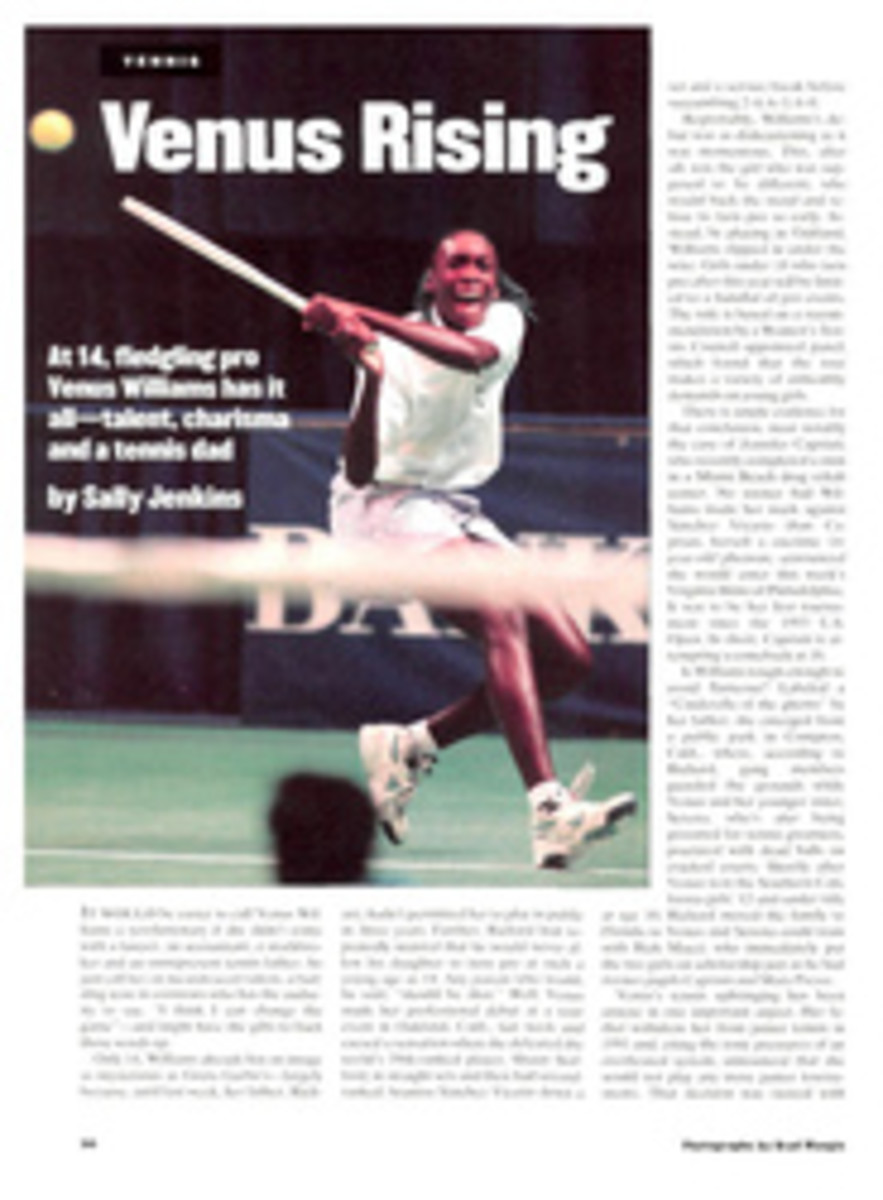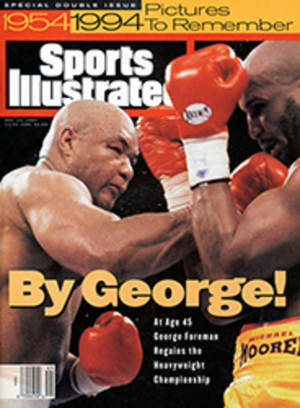
No Crowds, No Condos, No Cappuccino
In the northwest corner of Montana, where moose outnumber people and the thermometer spends a good part of the winter on the south side of freezing, you'll find the most stubbornly anachronistic ski area in the U.S. The place is called Turner Mountain, and it is located in the remote Purcell Range of the Northern Rockies, 22 miles northwest of the town of Libby.
Turner was built almost entirely by volunteers from Libby, and it was a bit on the rustic side even back when it opened, in 1961. It had no electricity, no telephone, one beginner run and only one paid employee. The area consisted of two ramshackle base buildings and a single lift—a 5,600-foot-long T bar, the biggest vertical T bar ever built in North America.
Over the years, as skiing has become increasingly a pastime of the rich and famous, and as luxury hotels and three-star restaurants and high-speed chair-lifts have become de rigueur, small ski areas have gone the way of the family farm. When Turner was built, it was one of more than 1,200 ski areas in the U.S., most of them community run. Today, while there has been no decrease in the number of skiers, only about 500 such areas remain in operation, while the lion's share of business is at giant resorts.
Yet Turner, ignoring, as it always has, anything that smacks of convention, is adamantly in business. And its facilities remain on the rustic side: no electricity, no telephone, no employees and no lifts except that T bar—still, by the way, the biggest in North America.
To understand this ski area and its resistance to change, one must first spend time in Libby. The town (pop. 4,000) is on the banks of the Kootenai River, 45 miles south of the Canadian border, and is home to most of Turner's skiers. Libby is a classic Western logging community. Many of its citizens work at the sprawling Stimson Lumber Co., and the entire town smells distinctly of bark chips. Even the high school's teams are nicknamed the Loggers. Two signs next to each other on Highway 2, Libby's main thoroughfare—one reading PAWNS & GUNS and the other, JESU'S is LORD—indicate what is meaningful in this town.
People don't arrive in Libby by accident—it's a two-hour drive from the nearest interstate—and if they do come, they often stay. To be granted membership in the local Pioneer Club, you have to have lived in town for 25 years. Without a steady influx and exodus of people, things tend to change very slowly, and the residents prefer life that way. In Libby there are quilting clubs and gold-panning outings and a local paper that reports on who has been invited to dinner at a neighbor's house. The local radio station, KLCB, stops broadcasting each evening at 10.
Turner Mountain is a few miles off State Road 506, on an unpaved access road riddled with potholes. The road ends in a large cul-de-sac that serves as Turner's parking lot. For a ski area, Turner is steep: The mountain swoops dramatically upward for 2,165 vertical feet to a smooth, rounded summit. Virtually all of the 25 slopes are best suited for accomplished skiers, and on most ski days—Turner is open only on weekends and holidays, when volunteer work is available—fewer than 200 people are on the hill.
Of the area's two wooden buildings, one houses the diesel-powered 1959 International bulldozer engine that runs the T bar. This building is painted rust-red and looks like an Appalachian shanty, complete with a long steel smokestack poking out the top. When the T bar is running, the whole shack rumbles as if it were about to explode and the smokestack emits black clouds of exhaust.
The other structure, about the size of a mobile home, serves as a snack bar. The snacks—burgers, mostly, unless someone hooks a whitefish in the Kootenai and decides to share it—are cooked up on a propane stove. This is also the place to meet Turner's founding fathers: When they're not skiing, Gene Buti, Elmer Anderson and Willie Schikora hang out in the back. If a stranger happens by, which is rare, they'll explain Turner's pricing system.
Lift tickets cost $15; an adult season's pass, $180. (At Aspen, by comparison, a season's pass costs $1,090.) If you would rather not pay at all, you can spend a few hours standing in the middle of one of the slopes, keeping an eye on things, and then you can ski for free the rest of the day. Conversely, if you have money to burn, on a Friday you can rent the whole mountain for between $600 and $800. So far several people have done this in the past year.
When someone does, the money comes in handy. Turner's annual operating budget, garnered mainly from ticket sales, is $20,000. One third is used to pay insurance premiums, the other two thirds for upkeep. "If anything major happens," says Buti, "like if the lift breaks—we're still using the original cable from '61—the area is out of business. We're dead." A running joke in Libby is that whoever wins the lottery must buy the ski area a new chairlift, and it is, in fact, seeking to raise money for a new lift.
That T bar, though, is what separates Turner from every other ski hill in the country. Turner's ancient lift yanks you out of the base shack with a back-wrenching jolt, then proceeds to bounce irritably up the hill. By the time you reach Turner's 5,950-foot summit 15 minutes later, your legs are weary. And you haven't even begun to ski.
The slopes, especially on a Saturday, when the snow that has fallen all week lies deep and untracked, are better than those at most resorts. Turner was built on the site of a large burn, eliminating the need to cut down many trees and producing runs that are wide-open and very fast. The snow at Turner has a tendency to fall lightly. When your ski tips slice through it, great swirls of powder circle you, like billowing curtains. And with so few skiers, there is little danger of running into someone else. The only real hazards are the so-called moose holes, craters in the snow where moose have spent the night.
While the U.S. Forest Service actually owns Turner, construction of the area was a grassroots affair: The capital, a total of $100,000, was provided by the J. Neils Lumber Company and other local businesses, and much of the labor was done by the citizens of Libby. A holding company called Kootenai Winter Sports was formed, and everyone who contributed to building the ski area was given shares of stock.
"We've lost track of who the shareholders are, but that doesn't really matter," says Jerry Rawles, 65, who served as president of Kootenai Winter Sports during Turner's construction. "Turner Mountain has never turned a profit and probably never will."
There was a time, though, when people thought Turner was going to be a boon to Libby's economy. It snows an average of 20 feet a year on the hill, and the evergreen-covered mountains of the Northern Rockies are spectacularly beautiful. Why wouldn't tourists pay to ski in such a setting? It turns out that droves of people do pay to ski in the region, but not at Turner. Soon after the mountain was opened, multimillion-dollar expansions were undertaken at resorts on either side of the ski area: at Schweitzer Mountain in Sandpoint, Idaho, 90 miles to the west of it, and at Big Mountain in Whitefish, Mont., 105 miles to the east.
"Schweitzer and Big Mountain smashed any plans we had of Turner making money," says Rawles, who now lives near Seattle but occasionally returns to Turner. "So we simply let it all stay the same, a sort of living monument to the past. The biggest change in the last three decades was replacing the outhouses with port-a-potties."
And although recent increases in the price of lift tickets at both Schweitzer and Big Mountain have resulted in more people visiting Turner, its skiers remain resolutely old-fashioned. You'll never hear anyone at Turner complain of the cold or the lack of amenities or even the absence of easy terrain. "The place was built by ski addicts and is still home to ski addicts," says Rawles. "And as far as Turner skiers are concerned, we have all the luxuries we'll ever need: a good mountain, good skiers and good snow."
TWO ILLUSTRATIONS
KENT CHRISTENSEN
Michael Finkel spent much of the summer in Africa, where he skied on Tanzania's Mount Kilimanjaro.

